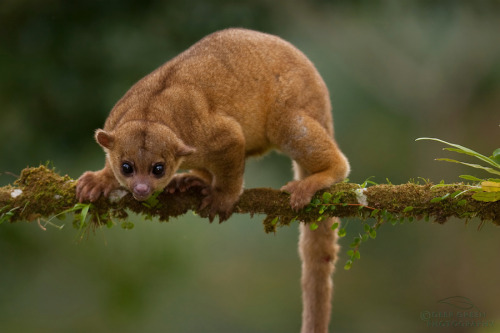
nome: jupará
nome científico: potos flavus
ordem: carnivora
família: procyonidae
outros nomes: quincaju
descrição: os juparás são mamíferos arborícolas e nocturnos da família dos procionídeos, da mesma família dos quatis. são encontrados do méxico ao sudeste do brasil, mas principalmente na amazónia. possuem cerca de 60 cm de comprimento, cabeça arredondada, orelhas e focinho curtos, cauda longa e preênsil, pelagem densa e macia, de cor castanha-avermelhada ou amarelada. chegam a pesar 3 kg. alimentam-se basicamente de frutos, insectos e néctar de flor. devido à sua alimentação ser de néctar de flores, são considerados bons polinizadores. pode chegar a viver 30 anos em cativeiro e a sua gestação é de 4 meses. o peso varia entre 1,4 a 4,6 kg, com comprimento do corpo variando entre 40 a 80 cm, e cauda 39 a 57 cm. os machos geralmente são maiores que as fêmeas. quando activo, move-se rapidamente entre a copas das árvores, saltando para outra árvore quando necessário. percorrem rotas no território, que são marcadas pelo próprio animal, utilizando glândulas localizadas no tórax e abdómen.

Sem comentários:
Enviar um comentário